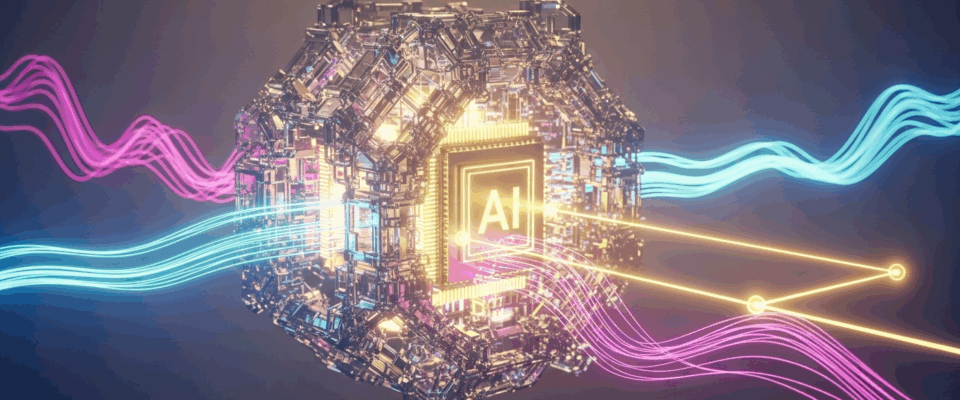To find your perfect match in today’s digital world is to interact with a system powered by increasingly sophisticated machine learning. Traditional algorithms, which rely on static rules and user-declared preferences, are giving way to dynamic, self-improving models that learn from the subtle nuances of human behavior. This evolution marks a significant shift from simply filtering profiles to actively predicting compatibility on a deeply personalized level.
Machine learning (ML) transforms a dating app from a passive catalog into an active, intelligent partner in the search for connection. These systems are designed to understand not just what you say you want, but what your actions reveal about your desires, creating a constantly evolving model of your ideal partner. The engineering that underpins such a system is complex, as it must be built upon a robust application architecture capable of processing vast streams of real-time data to make its predictions.
The goal is to move beyond simple keyword matching and into the realm of predictive affinity, where the platform anticipates your needs before you articulate them. This technology promises a future where the path to a meaningful connection is shorter, more intuitive, and guided by a system that truly understands you. This article explores how machine learning models are revolutionizing the landscape of digital matchmaking, from the data they consume to the user experiences they create.
The Fuel for the Learning Engine: Behavioral Data
Machine learning models are insatiably hungry for data, and in the context of a social app, their preferred meal is rich behavioral data. While explicit information like age, hobbies, and quiz answers provides a useful starting point, it’s the implicit signals—the digital breadcrumbs a user leaves behind—that offer the deepest insights. These are the unstated truths that reveal a user’s genuine preferences.
Every action, or inaction, is a valuable data point. The profiles a user chooses to view, the duration of their gaze, the types of photos they respond to, and the communication style they employ are all fed into the ML model. This creates a far more accurate and dynamic user profile than any static questionnaire could ever hope to capture. The system learns to recognize patterns, such as a user consistently engaging with profiles that mention outdoor activities, even if the user never explicitly listed “hiking” as an interest.
This focus on unconscious user signals allows the platform to overcome the common discrepancy between what people say they want and what they actually pursue. The learning engine effectively becomes a digital student of human attraction, constantly refining its hypotheses with every new piece of behavioral evidence it collects. This continuous learning cycle is what enables the system to deliver increasingly relevant and serendipitous matches over time.
Beyond Simple Rules: Advanced ML Models
The machine learning models used in modern matchmaking go far beyond the simple filtering algorithms of the past. They employ sophisticated techniques designed to understand complex patterns and make nuanced predictions about compatibility. These models are not programmed with rigid “if-then” rules; instead, they are trained on vast datasets to discover the hidden correlations that lead to successful interactions.
One powerful approach is the use of clustering algorithms. These models group users into “clusters” or “personas” based on thousands of behavioral and psychographic data points, without any preconceived notions. The system might discover a cluster of “intellectual homebodies” or “adventurous foodies,” and can then recommend matches between users who fall into compatible clusters. This allows for the discovery of non-obvious compatibilities that traditional filters would miss.
Another advanced technique involves reinforcement learning, where the model is treated like an agent that learns through trial and error. The goal is to maximize a “reward,” which is typically a successful match defined by a long, positive conversation or an exchange of contact information. To achieve this, the system learns from a variety of signals:
- Positive feedback, such as two users mutually liking each other and starting a conversation.
- Negative feedback, such as a user consistently skipping profiles with certain attributes.
- Exploration, where the model intentionally shows a user a “wildcard” match outside their usual pattern to test for new potential interests.
The Challenge of the Black Box and Explainable AI
One of the greatest challenges in deploying machine learning for matchmaking is the “black box” problem. Many advanced models, particularly deep neural networks, are so complex that even their creators cannot fully articulate why they made a specific decision. For a user, being presented with a match without any context can feel random and untrustworthy, undermining the platform’s credibility.
To combat this, the industry is moving towards “Explainable AI” (XAI). The goal of XAI is to build models that can provide a clear and understandable rationale for their recommendations. Instead of simply saying “You’re a 90% match,” an explainable system might say, “We matched you because you both share a sarcastic sense of humor in your bios and a love for 80s horror films.” This transparency builds user trust and makes the technology feel more like a helpful assistant than an opaque overlord.
Building this layer of trust is paramount, as users are entrusting the algorithm with one of the most personal aspects of their lives. An effective XAI implementation not only justifies a match but also provides excellent conversation starters, bridging the gap between the digital introduction and a real human conversation. It transforms the algorithm’s output from a cold data point into a warm, personalized insight.
Creating a Dynamic and Adaptive Journey
The ultimate application of machine learning in social apps extends beyond one-time matchmaking. The technology is used to personalize and optimize the entire user journey from the moment they sign up. The model can dynamically adjust the type and frequency of notifications, suggest the best time of day to be active on the app, and even provide coaching tips to help a user improve their profile’s effectiveness.
This creates a hyper-personalized experience where the app feels uniquely tailored to each individual’s personality and goals. For example, if the model detects that a user is experiencing “swipe fatigue,” it might switch from showing an endless stream of profiles to presenting a smaller, highly curated batch of “most compatible” matches for the day. This level of proactive user engagement helps keep users invested and prevents them from abandoning the platform out of frustration.
By learning an individual’s unique interaction style, the ML model can shape the user experience in real time to maximize its value. This adaptive capability is the true power of machine learning in this domain. It’s a shift from a static tool to a dynamic companion that actively works to help the user achieve their goal of finding a meaningful connection.
Questions and Answers
The machine learning model analyzes “dwell time”—how long you spend looking at a profile, its photos, and reading its bio. If you consistently spend more time on certain types of profiles, even without liking them, the algorithm interprets this as a strong signal of interest and will start showing you more profiles with similar characteristics.
Yes, this is a significant ethical concern. If the historical data the model is trained on contains human biases (e.g., preferences related to race, age, or body type), the algorithm can learn and even amplify those biases. Responsible companies must actively work to de-bias their models through fairness-aware algorithms and regular audits to ensure they are promoting a diverse and inclusive matching environment.
Unlikely. The goal of AI and machine learning in this context is not to eliminate human choice, but to augment it. The technology serves as an incredibly powerful filter and recommendation engine to help you discover people you might not have otherwise found. The final decision and the chemistry of a real-world connection will always remain a fundamentally human experience.

